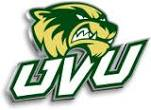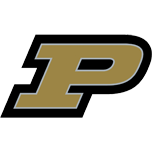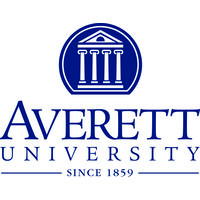What do they do?
Pilot and navigate the flight of fixed-wing aircraft, usually on scheduled air carrier routes, for the transport of passengers and cargo. Requires Federal Air Transport certificate and rating for specific aircraft type used. Includes regional, national, and international airline pilots and flight instructors of airline pilots.
Also known as:
Airbus Captain, Airline Captain, Airline Pilot, Airline Transport Pilot, Captain, Check Airman, Co-Pilot, Commercial Airline Pilot, First Officer, Line Pilot, Pilot
-
4.3%
Change
Ranks #28 in job growth rate100Job Openings
Ranks #25 in net job growth
-
Purdue University-Main Campus
West Lafayette, IN
-
Utah Valley University
Orem, UT
-
Auburn University
Auburn, AL
-
California Aeronautical University
Bakersfield, CA
-
Central Washington University
Ellensburg, WA
Looking for colleges that offer a specific major? Use the College Match Tool to find your best-matched schools and discover your estimated Net Price!
- Doctorate or Professional Degree (2%)
- Master's degree (13%)
- Bachelor's degree (58%)
- Associate's degree (8%)
- Some college, no degree (13%)
- High school diploma equivalent (5%)
- Less than high school diploma (1%)
People in this career often have these skills:
- Operation and Control - Controlling operations of equipment or systems.
- Operations Monitoring - Watching gauges, dials, or other indicators to make sure a machine is working properly.
- Active Listening - Giving full attention to what other people are saying, taking time to understand the points being made, asking questions as appropriate, and not interrupting at inappropriate times.
- Critical Thinking - Using logic and reasoning to identify the strengths and weaknesses of alternative solutions, conclusions, or approaches to problems.
- Monitoring - Monitoring/Assessing performance of yourself, other individuals, or organizations to make improvements or take corrective action.
- Judgment and Decision Making - Considering the relative costs and benefits of potential actions to choose the most appropriate one.
- Reading Comprehension - Understanding written sentences and paragraphs in work-related documents.
- Time Management - Managing one's own time and the time of others.
- Speaking - Talking to others to convey information effectively.
- Active Learning - Understanding the implications of new information for both current and future problem-solving and decision-making.
- Coordination - Adjusting actions in relation to others' actions.
- Complex Problem Solving - Identifying complex problems and reviewing related information to develop and evaluate options and implement solutions.
People in this career often know a lot about:
- Transportation - Knowledge of principles and methods for moving people or goods by air, rail, sea, or road, including the relative costs and benefits.
- English Language - Knowledge of the structure and content of the English language including the meaning and spelling of words, rules of composition, and grammar.
- Public Safety and Security - Knowledge of relevant equipment, policies, procedures, and strategies to promote effective local, state, or national security operations for the protection of people, data, property, and institutions.
- Mechanical - Knowledge of machines and tools, including their designs, uses, repair, and maintenance.
- Geography - Knowledge of principles and methods for describing the features of land, sea, and air masses, including their physical characteristics, locations, interrelationships, and distribution of plant, animal, and human life.
- Mathematics - Knowledge of arithmetic, algebra, geometry, calculus, statistics, and their applications.
- Computers and Electronics - Knowledge of circuit boards, processors, chips, electronic equipment, and computer hardware and software, including applications and programming.
- Physics - Knowledge and prediction of physical principles, laws, their interrelationships, and applications to understanding fluid, material, and atmospheric dynamics, and mechanical, electrical, atomic and sub-atomic structures and processes.
People in this career often have talent in:
- Response Orientation - The ability to choose quickly between two or more movements in response to two or more different signals (lights, sounds, pictures). It includes the speed with which the correct response is started with the hand, foot, or other body part.
- Problem Sensitivity - The ability to tell when something is wrong or is likely to go wrong. It does not involve solving the problem, only recognizing that there is a problem.
- Control Precision - The ability to quickly and repeatedly adjust the controls of a machine or a vehicle to exact positions.
- Reaction Time - The ability to quickly respond (with the hand, finger, or foot) to a signal (sound, light, picture) when it appears.
- Near Vision - The ability to see details at close range (within a few feet of the observer).
- Far Vision - The ability to see details at a distance.
- Deductive Reasoning - The ability to apply general rules to specific problems to produce answers that make sense.
- Perceptual Speed - The ability to quickly and accurately compare similarities and differences among sets of letters, numbers, objects, pictures, or patterns. The things to be compared may be presented at the same time or one after the other. This ability also includes comparing a presented object with a remembered object.
- Rate Control - The ability to time your movements or the movement of a piece of equipment in anticipation of changes in the speed and/or direction of a moving object or scene.
- Depth Perception - The ability to judge which of several objects is closer or farther away from you, or to judge the distance between you and an object.
- Oral Comprehension - The ability to listen to and understand information and ideas presented through spoken words and sentences.
- Written Comprehension - The ability to read and understand information and ideas presented in writing.
- Oral Expression - The ability to communicate information and ideas in speaking so others will understand.
- Inductive Reasoning - The ability to combine pieces of information to form general rules or conclusions (includes finding a relationship among seemingly unrelated events).
- Information Ordering - The ability to arrange things or actions in a certain order or pattern according to a specific rule or set of rules (e.g., patterns of numbers, letters, words, pictures, mathematical operations).
- Flexibility of Closure - The ability to identify or detect a known pattern (a figure, object, word, or sound) that is hidden in other distracting material.
- Spatial Orientation - The ability to know your location in relation to the environment or to know where other objects are in relation to you.
- Selective Attention - The ability to concentrate on a task over a period of time without being distracted.
- Time Sharing - The ability to shift back and forth between two or more activities or sources of information (such as speech, sounds, touch, or other sources).
- Arm-Hand Steadiness - The ability to keep your hand and arm steady while moving your arm or while holding your arm and hand in one position.
- Multilimb Coordination - The ability to coordinate two or more limbs (for example, two arms, two legs, or one leg and one arm) while sitting, standing, or lying down. It does not involve performing the activities while the whole body is in motion.
- Peripheral Vision - The ability to see objects or movement of objects to one's side when the eyes are looking ahead.
- Hearing Sensitivity - The ability to detect or tell the differences between sounds that vary in pitch and loudness.
- Speech Recognition - The ability to identify and understand the speech of another person.
- Speech Clarity - The ability to speak clearly so others can understand you.
- Visual Color Discrimination - The ability to match or detect differences between colors, including shades of color and brightness.
- Glare Sensitivity - The ability to see objects in the presence of a glare or bright lighting.
- Manual Dexterity - The ability to quickly move your hand, your hand together with your arm, or your two hands to grasp, manipulate, or assemble objects.
- Speed of Closure - The ability to quickly make sense of, combine, and organize information into meaningful patterns.
- Visualization - The ability to imagine how something will look after it is moved around or when its parts are moved or rearranged.
- Night Vision - The ability to see under low-light conditions.
People in this career often do these activities:
- Pilot aircraft.
- Report vehicle or equipment malfunctions.
- Notify others of emergencies, problems, or hazards.
- Respond to transportation emergencies.
- Inspect aircraft or aircraft components.
- Communicate with others to coordinate vehicle movement.
- Monitor engine operation or functioning.
- Monitor equipment gauges or displays to ensure proper operation.
- Monitor work environment to ensure safety or adherence to specifications.
- Coordinate flight control or management activities.
- Resolve issues affecting transportation operations.
- Meet with coworkers to communicate work orders or plans.
- Test performance of aircraft equipment.
- Arrange maintenance activities.
- Maintain locomotives or other rail equipment in good working condition.
- Choose optimal transportation routes or speeds.
- Evaluate performance of applicants, trainees, or employees.
- Record operational details of travel.
- Train transportation or material moving personnel.
- Load shipments, belongings, or materials.
- Direct material handling or moving activities.
- Provide transportation information to passengers or customers.
- Plan flight operations.
This page includes data from:

 Occupation statistics: USDOL U.S. Bureau of Labor Statistics Occupational Employment Statistics
Occupation statistics: USDOL U.S. Bureau of Labor Statistics Occupational Employment Statistics









